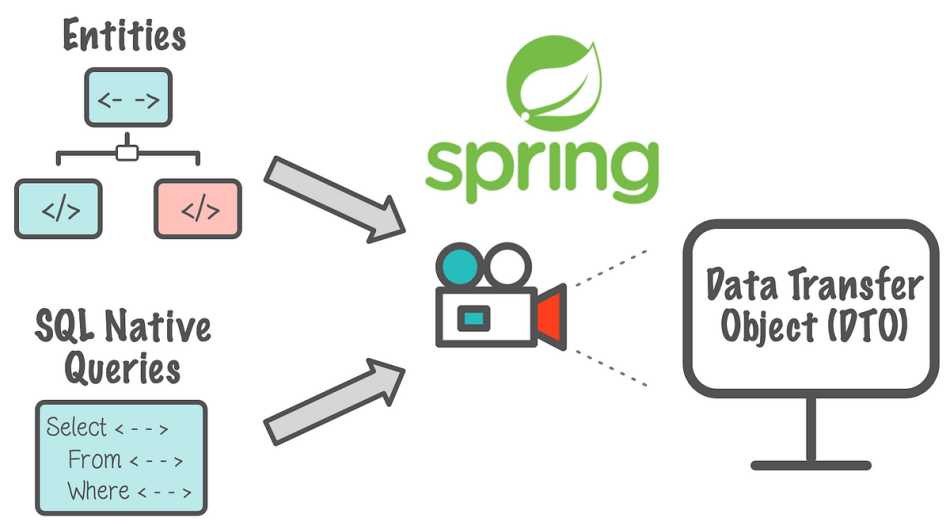DTO and Entity Separation is Crucial for Java Backend Applications
 Tuanhdotnet
Tuanhdotnet5 min read

1. What are DTOs and Entities?
Before exploring their nuances, it is crucial to define these two terms.
1.1 Entities: The Foundation of Persistence
Entities represent the database table mappings in Java applications. Annotated with @Entity, these objects contain fields that correspond to columns in a database table. They are typically used in JPA/Hibernate to handle database operations.
@Entity
public class User {
@Id
@GeneratedValue(strategy = GenerationType.IDENTITY)
private Long id;
private String name;
private String email;
// Getters and Setters
}
Here, the User entity maps directly to a table in the database, making it tightly coupled to the database schema.
1.2 DTOs: Simplifying Data Communication
DTOs, on the other hand, are plain Java objects (POJOs) designed to transfer data between different layers of an application. They focus solely on carrying data, often in a more lightweight format than entities.
public class UserDTO {
private String name;
private String email;
// Getters and Setters
}
In this example, UserDTO omits database-specific annotations and fields, focusing only on the information required by the client.
1.3 The Key Difference
The primary distinction lies in their purpose:
- Entities are database-centric and used for persistence operations.
- DTOs are client-centric and used for communication between application layers.
2. Why Separate DTOs and Entities?
While combining DTOs and Entities might seem convenient, it introduces significant challenges that can snowball over time.
2.1 Tight Coupling and Schema Changes
Entities are tightly coupled to the database schema. If a database schema changes, the corresponding entity must also change. Using entities directly as DTOs means any schema change can cascade into breaking API changes.
// Entity directly exposed as API response
@Entity
public class Product {
@Id
private Long id;
private String name;
private double price;
private String internalCode; // Newly added field
}
Adding internalCode to the Product entity inadvertently exposes sensitive data if used directly in API responses. A DTO could have prevented this.
2.2 Overfetching and Underfetching Data
Entities often contain fields irrelevant to client requests. When used directly, they can lead to overfetching (sending unnecessary data) or underfetching (not providing required fields).
public class ProductDTO {
private String name;
private double price;
// Constructor, Getters, and Setters
}
Here, ProductDTO ensures only relevant fields are included, improving performance and security.
2.3 Improved Validation and Transformation
DTOs allow for specific validation logic and data transformation tailored to client needs, reducing complexity in entities.
3. How to Work with DTOs and Entities
Mapping Between DTOs and Entities
One of the key tasks is converting between DTOs and Entities. This can be done manually or using libraries like MapStruct or ModelMapper.
public class UserMapper {
public static UserDTO toDTO(User user) {
UserDTO dto = new UserDTO();
dto.setName(user.getName());
dto.setEmail(user.getEmail());
return dto;
}
public static User toEntity(UserDTO dto) {
User user = new User();
user.setName(dto.getName());
user.setEmail(dto.getEmail());
return user;
}
}
3.2 Using MapStruct for Efficiency
MapStruct automates the mapping process with annotations:
@Mapper
public interface UserMapper {
UserDTO toDTO(User user);
User toEntity(UserDTO dto);
}
Using MapStruct eliminates boilerplate code while ensuring accuracy.
3.3 Layering for Clear Separation
Architectural layering further enforces separation:
- Controller Layer: Accepts DTOs as input and sends DTOs as output.
- Service Layer: Handles business logic and mapping between DTOs and Entities.
- Repository Layer: Operates directly on Entities for database interactions.
4. Best Practices for DTOs and Entities
Avoid Bi-directional Mapping
A common mistake is embedding one object type in another, creating circular dependencies.
public class OrderDTO {
private UserDTO user; // Can lead to circular references
}
Instead, use identifiers or simplified objects to represent relationships.
Keep DTOs Lean
Include only the necessary fields in DTOs to minimize payload size and improve performance.
Separate Input and Output DTOs
Use distinct DTOs for incoming requests and outgoing responses to better align with API requirements.
public class UserRequestDTO {
private String name;
private String email;
}
public class UserResponseDTO {
private Long id;
private String name;
private String email;
}
5. Common Errors and Troubleshooting
Performance Issues with Mapping
Overusing manual mapping can degrade performance in large applications. Optimize by adopting automated mapping tools.
Validation Conflicts
Ensure validations are applied consistently across layers. Use DTOs for input validation and entities for database constraints.
6. Conclusion
In Java backend applications, properly handling DTOs and Entities is essential for maintaining a scalable and maintainable architecture. By separating these two concepts, developers can avoid tight coupling, enhance performance, and ensure robust validation. Have you faced challenges when working with DTOs and Entities? Share your experiences or questions in the comments below!
Read more at : DTO and Entity Separation is Crucial for Java Backend Applications
0
Subscribe to my newsletter
Read articles from Tuanhdotnet directly inside your inbox. Subscribe to the newsletter, and don't miss out.
Written by

Tuanhdotnet
Tuanhdotnet
I am Tuanh.net. As of 2024, I have accumulated 8 years of experience in backend programming. I am delighted to connect and share my knowledge with everyone.